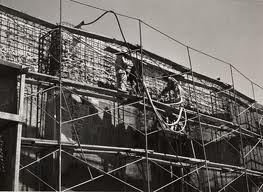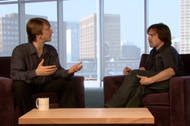Case study: The Case Study – Part 1
So, you’re in businesses. You have customers. Better still, you have loyal customers who view you as a trusted and valued partner and who sing your praises. This is very rewarding for you and it makes you feel happy when you think about it. When you and your staff review the status of your customer accounts, you smile and nod at each other with deep satisfaction and say, “Boy, that customer is just so great. They love us and we love them. Isn’t that just perfect?”
And then you move on to the next customer on your list, never realizing that you might as well have just thrown a bunch of cash out the window because of the cheap marketing opportunity you missed.
To make sure you don’t repeat this mistake, we offer you five ways to get that perfect customer to sell your products for you. Two words: case study.
1. Ask
Yes, we know we’re stating the obvious here, but we find it never hurts to do so. The fact is that if you have great relationships with your customers – your product solved their problem or enabled them to grow or corner a market – then simply ask them if you can share their success story with other potential customers. Chances are they’ll say yes. People like to help each other and contribute to one another’s success.
Important: when you do ask, be very specific about how you plan to promote and distribute the information. If you want to post the case study to your website, your social media marketing outlets, and send it out in your customer newsletter, then ask permission for each specific activity. You don’t want to inadvertently damage your great relationship when the case study starts popping up across the digital universe but your customer didn’t realize it would get that level of exposure.
2. Seize the opportunity
Once they say yes, jump on the opportunity right away, while the success of the project is still fresh in everyone’s collective memory and everyone’s still feeling good about it. Set up an appointment for a phone call or visit, where possible, to get started.
Be sure to have a series of questions in mind (or better yet, on paper) that will facilitate you getting the information you need to tell their story.
3. Make it easy peesy
Make it so easy for your customer to work with you on this that they barely notice the effort. Remember, you’re the one asking for their help, so make it super easy for them to give it to you.
Find out how your contact prefers to communicate with you on this case study. Many customers find the “interview” method – whereby the person writing the case study (see step 4) conducts a phone or in-person interview designed to get the story – the easiest because all they have to do is talk. However, we’ve noticed that with the line blurring between work and home, more and more customers are asking us to email them the questions so they can work on them at their convenience.
Either way, be sure to stay on top of the project or it could easily fizzle out.
4. Go with a professional
This is where the real value of a case study comes in – by having a professional writer, especially one who specializes in storytelling – write up the customer’s success story.
If you have people on staff who can do this, wonderful. If you don’t, you really do need to hire a professional writer who can approach the project and the customer more objectively than you and your staff. Because a professional writer doesn’t already know the facts or the people involved, she’s more likely to approach the story with a fresh set of eyes and tell it in simple, plain language that a majority of readers will understand.
You may even want to hire the writer just after step 1 so she can handle the whole shebang for you.
5. Check the fine print
Before you post or otherwise distribute the case study, run it by your legal team and the customer whose story you’re telling one last time to be sure it doesn’t violate any non-disclosure or other contractual obligations you may have. Even if you and your customer do have strong contractual disclosure language, most professional writers should still be able to write a case study that’s compelling without sharing too many details.
However, you may do business in an industry where your customers are not comfortable with or just not able to share their success story publicly. In cases like these, you should still ask for short testimonials with the information the customer is willing to share. A testimonial saying “Widget Co. helped us secure our position in the Fortune 100 through their dynamic management consulting services,” demonstrates brand loyalty and trust without sharing details and is invaluable on a website or in a promotional piece.
Now that you’ve covered all five steps, be sure to:
- Distribute the customer success story as far and wide as the customer has agreed to. Consider sending out a press release about the success of the project and attach the case story as backup material.
- Start lining up additional customers to agree to participate in case studies. There’s no such thing as having too many!



